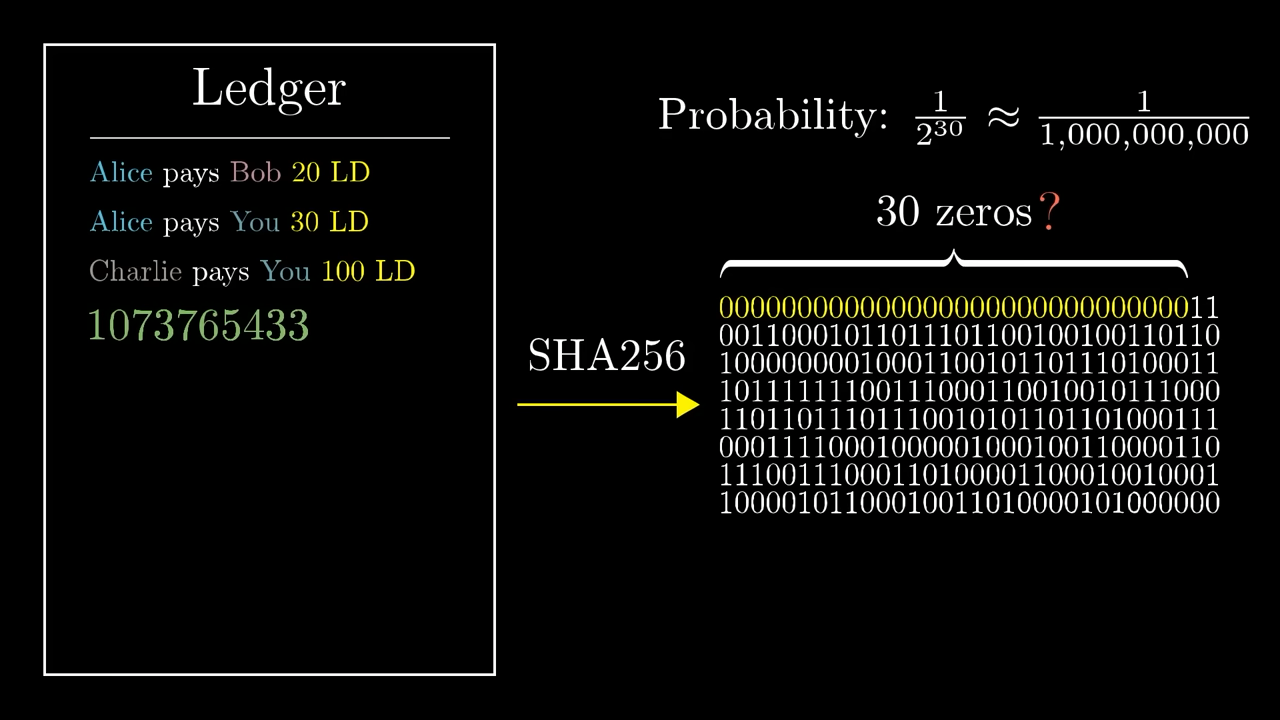What:
- A special number added to the very end of a block in the ledger.
- The SHA-256 of the block concatenated with this special number should end up having
ntrailing0’s. - Because of how hashing works, the only way to have figured this out would be to have checked every single previous number individually.

Motivation:
There’s an inherent problem when working with distributed ledgers. How do you verify that a change that you make, is heard by other nodes, and in the same order? What can you do to ensure someone else’s ledger looks the same as yours?
- Use “Proof Of Work”
- Fraudulent transactions would be computationally infeasible to introduce.